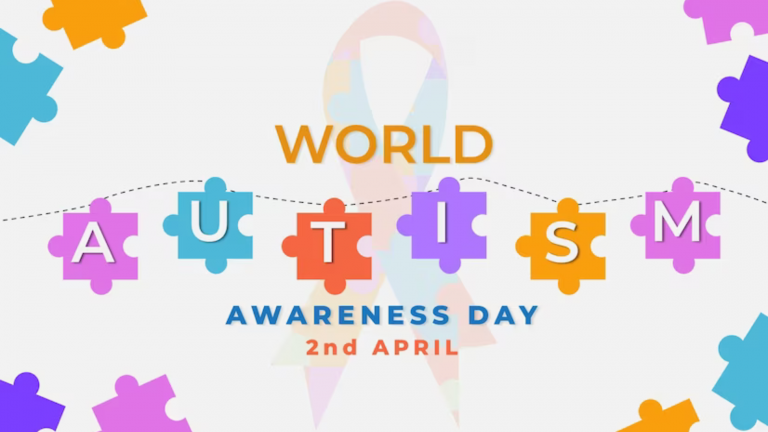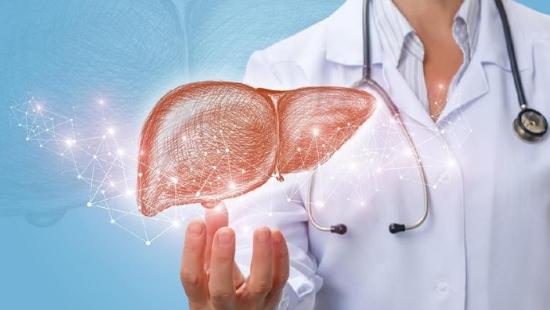Did you know? Autism affects 1 in 100 children in India under ten!
Autism, also known as Autism Spectrum Disorder (ASD), is a neurodevelopmental disorder that affects communication, social interaction, and behavior. Autism is a “spectrum” disorder that ranges from mild to severe. This year’s World Autism Awareness Day lets learn more about types of Autism Spectrum Disorder (ASD), Autism symptoms, why are most of Autism diagnosed in kids aged five years and under, five signs to detect Autism in children, how teleconsultation helps with Autism diagnosis and know more about the treatment and therapy for Autism in this blog-
Types of Autism Spectrum Disorder (ASD)
Autism Spectrum Disorder (ASD) is a complex neurodevelopmental condition. The American Psychiatric Association’s Diagnostic and Statistical Manual of Mental Disorders, 5th Edition (DSM-5) identifies several subtypes of ASD. These include:
- Autistic Disorder: This is also known as classic autism or simply “autism.” It is the most severe form of ASD and is characterized by significant social, communication, and behavioral challenges.
- Asperger’s Syndrome: This is a milder form of autism, often called “high-functioning autism.” People with Asperger’s syndrome may have difficulty with social interactions and may exhibit repetitive behaviors or narrow interests, but they may have normal language development and cognitive abilities.
- Pervasive Developmental Disorder: Not Otherwise Specified (PDD-NOS): This is a diagnosis given to individuals who exhibit some but not all of the symptoms of autism or who have mild or atypical symptoms that do not fit neatly into the other categories.
- Childhood Disintegrative Disorder: This is a rare condition in which a child normally develops until around age 2 but then experiences significant regression in social, communication, and cognitive skills.
- Rett Syndrome: This is a rare genetic disorder that primarily affects girls. It is characterized by normal development in early childhood, followed by a loss of communication and motor skills.
It’s worth noting that in 2013, the DSM-5 replaced the previous subtypes of autism (Autistic Disorder, Asperger’s Syndrome, and PDD-NOS) with the umbrella term Autism Spectrum Disorder. This reflects the understanding that there is a wide range of symptoms and severity levels within the autism spectrum and that it is not always easy to differentiate between these subtypes.
Autism Symptoms and Signs
Let’s know more about the common symptoms of Autism:
- Social communication challenges: Individuals with ASD may have difficulty with verbal and nonverbal communication. They may have trouble understanding social cues like facial expressions, tone of voice, and body language. They may also have difficulty initiating or maintaining conversations.
- Repetitive behaviors and routines: Many people with ASD have specific routines or rituals that they follow. They may also have repetitive movements or behaviors, such as rocking back and forth or flapping their hands.
- Sensory issues: Individuals with ASD may be oversensitive or under sensitive to certain sensory inputs, such as sounds, lights, or textures. This can lead to difficulties with daily activities like bathing or dressing.
- Restricted interests: People with ASD may have intense and specific interests in certain topics, objects, or activities. They may also have difficulty adapting to new or unexpected situations.
- Difficulty with social relationships: Individuals with ASD may have difficulty making and maintaining friendships. They may have difficulty understanding the social rules that build interpersonal interactions.
- Delayed or atypical development: Many children with ASD show delayed or atypical development, such as delayed speech or motor skills. They may also have trouble with executive functioning skills like planning, organizing, and prioritizing.
Why are most Autism cases diagnosed in kids aged five years and under?
Autism Spectrum Disorder (ASD) is commonly diagnosed in early childhood, with most children receiving a diagnosis between the ages of two to six. There are several reasons why ASD is often diagnosed in children aged five years and under, let’s read about them:
- Developmental milestones: During the first few years of life, children reach several developmental milestones, including language development, social interaction, and play skills. Children with ASD may experience delays or differences in these areas, which parents or healthcare providers can notice.
- Early screening: Many healthcare providers now use screening tools to identify children who may be at risk for ASD, even before symptoms become apparent. This allows for earlier intervention and support.
- Increased awareness: There is now greater awareness and understanding of ASD among parents, healthcare providers, and educators, which has led to more children being evaluated for ASD at a younger age.
- Diagnostic criteria: The diagnostic criteria for ASD have changed over time, with the most recent version (the DSM-5 explained earlier) including a broader range of symptoms and behaviors. This may contribute to more children being diagnosed at a younger age.
It’s important to note that while most children with ASD are diagnosed in early childhood, some may not be diagnosed until later in life. Additionally, some individuals with ASD may not receive a diagnosis, either due to a lack of access to healthcare or because their symptoms may be less severe or masked by other conditions.
Does your child suffer from Autism? 5 signs to watch out for.
- Delayed or absent language development: Children with ASD may have delayed speech or language development or not use language at all.
- Lack of social interaction: Children with ASD may have difficulty making eye contact, responding to social cues, and engaging in social play.
- Repetitive behaviors: Children with ASD may engage in repetitive behaviors, such as flapping their hands, rocking back and forth, or lining up objects.
- Difficulty with change or transition: Children with ASD may have trouble changing their routine or environment and may become upset or anxious when faced with unexpected situations.
- Sensory sensitivities: Children with ASD may have heightened or reduced sensitivity to specific sensory inputs, such as sound, touch, taste, or smell.
It’s important to note that these signs are not definitive and may not be present in every child with ASD. Additionally, some children without ASD may exhibit some of these behaviors. If you are concerned about your child’s development or behavior, seeking a professional evaluation from a qualified healthcare provider on the Gigadocs tele healthcare app is important. They can assess your child’s behavior and development and determine if a diagnosis of ASD is required.
How does Teleconsultation help with Autism diagnosis?
Tele-consultation, or telemedicine or telehealth, is a remote healthcare service that allows patients and their caregivers to receive medical care or therapy services through video conferencing or other digital communication technologies. Teleconsultation can be an effective way to provide support and treatment for individuals with Autism Spectrum Disorder (ASD), especially when in-person visits are not possible or safe.
Here are some ways that teleconsultation can help with Autism:
- Access to specialized care: Teleconsultation can provide individuals with ASD access to specialized care, regardless of location. This can be especially helpful for families living in rural or remote areas, where specialists or therapists may be lacking.
- Convenience: Teleconsultation can be more convenient for families with difficulty traveling to in-person appointments due to work schedules, transportation issues, or other factors.
- Flexibility: Teleconsultation allows for more flexible scheduling, which can be helpful for families with busy schedules or for individuals with ASD who may have difficulty sitting still for long periods.
- Continuity of care: Teleconsultation can help ensure continuity of care by allowing individuals with ASD to receive ongoing support and treatment, even if in-person visits are temporarily disrupted due to illness, travel, or other factors.
- Parent training: Teleconsultation can provide parent training and support, an essential aspect of treatment for individuals with ASD. Parents can learn strategies for managing challenging behaviors, promoting communication and social skills, and supporting their child’s development.
It’s important to note that teleconsultation is not a substitute for in-person evaluation and treatment, especially for individuals with complex medical or behavioral needs. However, it can be a valuable tool for providing support and treatment for individuals with ASD. It can complement in-person care to provide a comprehensive and integrated approach to treatment.
Treatment and Therapy for Autism
There is currently no cure for Autism Spectrum Disorder (ASD), as it is a lifelong neurodevelopmental condition. However, there are various interventions and therapies that can help individuals with ASD manage their symptoms and improve their quality of life.
Early intervention is critical for the best outcomes and often involves a combination of behavioral, educational, and medical therapies. Some of the common treatments and therapies for ASD include:
- Applied Behavior Analysis (ABA) therapy: This type of therapy focuses on teaching specific skills and behaviors using positive reinforcement.
- Speech and language therapy helps individuals with ASD improve their communication skills, including language development, social communication, and pragmatic language.
- Occupational therapy: This therapy helps individuals with ASD improve their daily living skills, such as self-care, fine motor skills, and sensory processing.
- Medications: While no medication can cure ASD, some can help manage specific symptoms, such as anxiety or hyperactivity.
- Special education services: Individuals with ASD may benefit from specialized educational programs tailored to their needs and abilities.
It’s important to note that while these interventions and therapies can be helpful, they are not one-size-fits-all, and what works for one individual may not work for another. Additionally, some individuals with ASD may have co-occurring conditions, such as anxiety or depression, that require additional treatment. The goal of treatment for ASD is not to cure the condition, but rather to help individuals with ASD live fulfilling and meaningful lives. To know more, download the Gigadocs app from-
- IOS App – apple.co/2W2iG4V
- Android App – bit.ly/33AQoRC
To know more e-mail, at info@gigadocs.com




